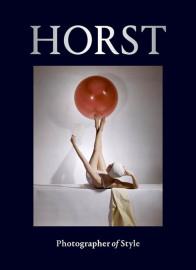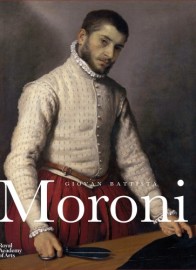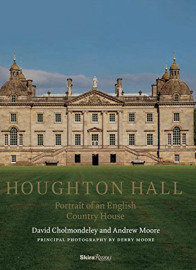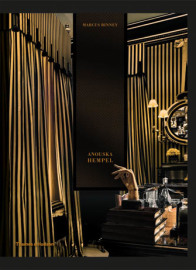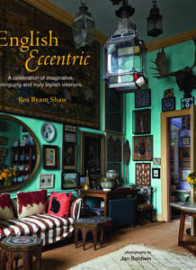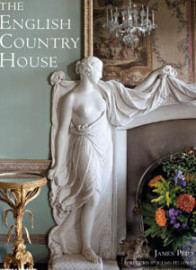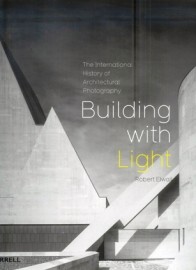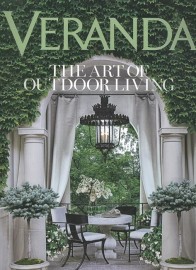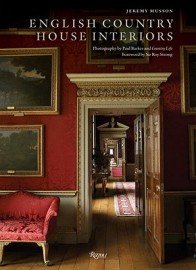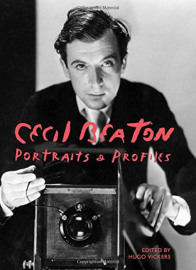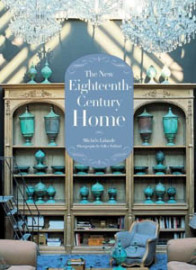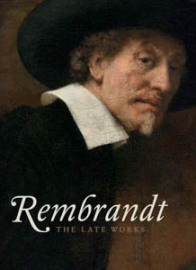Spirit of Place
By Aurelien Villette, Published by teNeues, RRP £50
To order Spirit of Place please visit GDC interiors Book Collection on Amazon
Aurelian Villette’s haunting portrayal of decaying interiors, some of them places of worship, some workplaces, others political auditoria or people’s homes, seems to strike a deeply embedded cord. Ever since the Renaissance when we started to dig up the relicts of classical civilisation and venerate them, greedily collect them and annex them to our worldview in the presentation of ourselves as equal in civilisation to the Romans and Greeks, ruins have been admired in the West. Classical ruins were not only a learning tool – teaching us anew the lost techniques of antiquity – but in a Romantic sense they have also been deeply evocative and salutary reminders that wealth, power and learning do not guarantee survival. A reminder indeed that all will ultimately end in dust or strangled by vines.
The cult of ruins was not limited to those of antiquity, but like a more refined version of our own guilty pleasure in watching disaster movies, or 24 hour news channels thick with ruination, artists were also commissioned to imagine the destruction of contemporary buildings. The great French 18th century painter Hubert Robert – otherwise known as ‘Robert des Ruines’ – was the famous go-to man for sublime depictions of Paris in ruins. Having returned from Rome where he spent eleven years apprenticed to Panini and in the circle of Piranesi, he applied himself to producing images of the iconic buildings of his beloved city in various states of destruction, including the still unfinished Musee du Louvre as a crumbling ruin. Produced on the eve of the French Revolution, his prophetic and dystopian visions of fire and destruction powerfully plugged into the general feeling of unease and dread in the context of a massively debt fuelled economy, and one in which early attempts at a central bank and paper money unconnected to gold had disastrously failed.
It was not long before Robert was also enlisted to recreate his paintings in 3-D by his rich and powerful collectors. Across Europe 18th century country house gardens would not be complete without a faux-ruin gracing a distant hilltop or lakeside, as at Painshill in Surrey. The Romantic combination of sublime tableaus and an opportunity for contemplative memento mori, ensured that artists and landscape designers would flood our visual vocabulary with gorgeous ruins.
Unbelievably, it was as part of his strategy to win the commission to design and build the Bank of England, that Sir John Soane got Joseph Michael Gandy in 1832 to complete a vision of that building in watercolour as a picturesquely overgrown ruin. An image that was no doubt partly intended to send shivers down the spine of those financiers who came upon it. But what may seem to us as a thoroughly bizarre image for an architect to present to a would-be client, was also accompanied by another image of the proposed building – pristine and complete, and a third showing it as weathered. All three imaginings of the future visual history of this building were then presented by Soane to the Bank’s Grand Tour educated governors, who were clearly satisfied with the design on the basis that it would one day make as picturesque a ruin in London as any in Rome.
If this seems extraordinary to the modern mind, it is interesting to note that like Soane, Albert Speer – in attempting to convince Hitler to buy into Ruinenwert, his theory of ruin value – presented a drawing of the Haupttribune (the buildings of the Nazi parade grounds) as a Wagnerian ivy covered ruin. His entourage may have been scandalised, but Hitler loved it. Speer records Hitler’s views in his memoirs:
“Hitler liked to say that the purpose of his building was to transmit his time and its spirit to posterity. Ultimately, all that remained to remind men of the great epochs of history was their monumental architecture, he remarked. What then remained of the emperors of the Roman Empire? What would still give evidence of them today, if not their buildings… So, today the buildings of the Roman Empire could enable Mussolini to refer to the heroic spirit of Rome when he wanted to inspire his people with the idea of a modern imperium. Our buildings must also speak to the conscience of future generations of Germans. With this argument Hitler also underscored the value of a durable kind of construction.”
It was decided – though not always acted upon – that the most significant buildings of the so-called ‘Thousand Year Reich’ would be built of stone, without the use of steel girders or reinforced concrete. But, as we all know, unlike the graceful and gradual dilapidations of antiquity, those of the short-lived Reich were – like a self-fulfilling prophesy – rapidly transformed into premature ruins by allied bombers within a few short years of their completion.
Ever since ‘Robert des Ruines’, the cultural discovery of pleasure and beauty in fear and destruction probably constitutes our first tentative flirtations with the horror genre. An aesthetic that accelerated in the 19th century into Gothic horror and which is still such a central part of our contemporary cultural experience. The almost sexual frisson derived from this counter intuitive equation of opposites is familiar to anyone who has ever enjoyed watching a good vampire movie. But perhaps we are innately aware of the entropy that is encoded into existence. The dreadful paradox is that the natural order of the universe is disorder and chaos to which everything must ultimately return. A beautiful ruin will always remind us of our less than humble place in the grand scheme of things.
Villette’s arresting photographs melancholically linger long after you have turned away from the images. Like a magnet that attracts and repels at the same time, we morbidly scan the images with fascination for signs of life or decay, whilst wishing to escape its allure. Stare too hard or too long down an open grave and you may get sucked in, is the niggling fear.
WANT MORE?
Here are some more Selections of the Best Interior Design Books:














